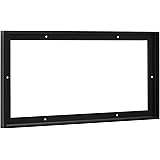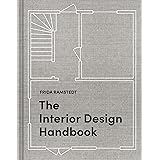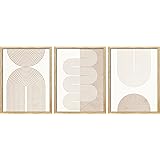Many homeowners dream of achieving the stunning, magazine-worthy look in their living spaces. Yet, often rooms fall flat, lacking the visual depth seen in professional designs. The secret lies not just in decor, but in expert lighting techniques. This guide expands on the video above, offering crucial tips to transform your home. You can create truly dramatic lighting and beautiful layers of light, just like a professional designer.
The Foundation: Embracing Multiple Light Sources
Relying solely on a single light source can make any room feel dull. Recessed lighting alone often creates a flat, uninviting atmosphere. When dimmed, it simply darkens the entire space, losing all visual interest. True home lighting artistry comes from using multiple light sources.
These varied sources work together. They create depth, contrast, and visual drama. This approach ensures your room feels both comfortable and sophisticated. It moves beyond basic illumination to craft a truly engaging environment.
General Ambient Lighting: Setting the Overall Mood
Ambient lighting provides the room’s base illumination. It allows for safe movement and general visibility. This type of lighting establishes the room’s overall mood and feel. Without it, other light layers cannot truly shine.
Consider more than just overhead fixtures. Chandeliers, as seen in the video, are excellent choices. They act as sculptural centerpieces. Flush-mount or semi-flush-mount fixtures also offer general illumination. Track lighting provides flexible ambient coverage. The goal is a uniform distribution of light across the space.
Targeted Task Lighting: Enhancing Functionality
Task lighting is essential for specific activities. It provides focused illumination where needed most. This prevents eye strain and boosts productivity. Good task lighting improves functionality in key areas.
In a kitchen, under-cabinet lighting illuminates countertops. A desk lamp is perfect for a home office. Floor lamps positioned next to a sofa offer ideal reading light. According to research, proper task lighting can reduce eye fatigue by up to 50%. This improves comfort and efficiency for focused work or hobbies.
Accent and Mood Lighting: Creating Drama and Visual Interest
Accent lighting highlights specific features or architectural details. It introduces drama and visual intrigue. This layer adds personality to your space. It draws the eye to decorative elements.
Wall sconces can frame artwork or define a hallway. Picture lights effectively illuminate cherished paintings. Table lamps, like the one on the sideboard in the video, add soft glows. They contribute to the room’s overall mood. Strategic spotlights can emphasize textures or sculptures. This interplay of light and shadow is key to dramatic lighting. It makes a room feel like a scene from a Hollywood movie.
Dynamic Control: The Power of Dimmers
Dimmers are absolutely indispensable for layered lighting. They offer unmatched flexibility. They allow you to instantly adjust light intensity. This instantly changes a room’s entire ambiance.
Wall dimmers are ideal for ceiling lights and chandeliers. They seamlessly integrate into your home’s electrical system. For portable lamps, cord-line dimmers are a simple addition. These tools empower you to fine-tune every light source. This ability creates truly dynamic environments.
Imagine setting a bright level for lively entertaining. Then, easily dim the lights for a relaxed movie night. Dimmers also extend bulb life by reducing power consumption. This feature provides both aesthetic and practical benefits. They enable precise control over your dramatic lighting schemes. In fact, dimmers can extend bulb lifespan by as much as 20 times. This provides long-term cost savings alongside mood control.
Illuminating Choices: Selecting the Right Bulbs
The type of bulb you choose greatly impacts your room’s feel. Modern LED technology offers incredible advantages. LEDs are incredibly energy-efficient. They also boast impressive longevity.
These bulbs consume up to 80% less energy than traditional incandescents. They can last 25 times longer. This makes them ideal for hard-to-reach fixtures. A single LED bulb might last over 25,000 hours. This means fewer replacements and lower energy bills. Embracing LEDs is a smart, sustainable choice for your home.
Understanding Color Temperature: Warmth and Consistency
Color temperature is measured in Kelvin (K). It describes the light’s appearance. The video recommends 2700 to 3000 Kelvin for most homes. This range produces a warm, inviting glow. It mimics the familiar warmth of incandescent bulbs.
Maintaining a consistent color temperature throughout a room is vital. Mixing warm and cool bulbs creates an unharmonious look. A cool, blue-tinted bulb next to a warm one is visually jarring. A unified color temperature ensures a cohesive feel. This consistency enhances your layered lighting. It contributes to a serene and sophisticated atmosphere.
The Soft Glow: Frosted and Soft White Bulbs
The choice of bulb finish is also crucial. Frosted or soft white bulbs are highly recommended. They diffuse light beautifully. This eliminates harsh “hot spots” and unpleasant glare.
When using lamp shades, exposed clear bulbs can be blinding. They create distracting pinpoints of intense light. Frosted bulbs scatter the light evenly. They produce a softer, more eye-pleasing glow. This small detail significantly elevates the quality of your home lighting. It ensures every layer contributes to a comfortable, inviting space.











